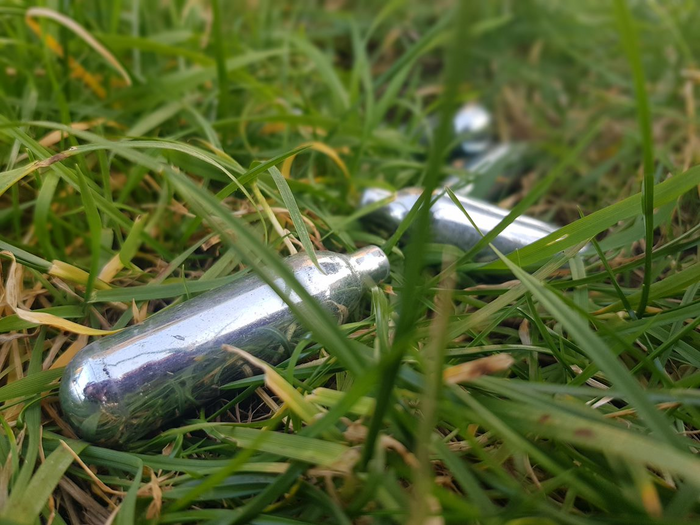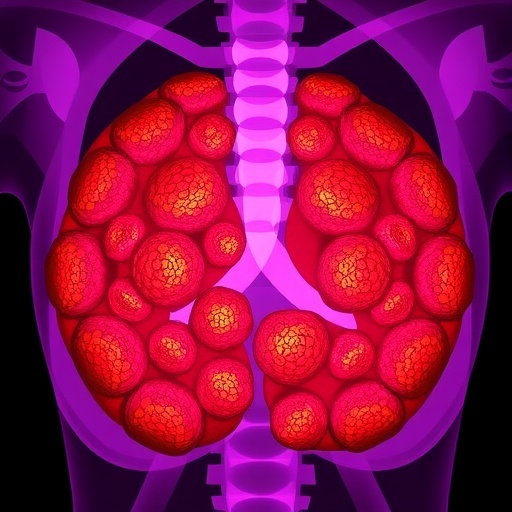Recommendations from research published today on the diagnosis and treatment of spinal cord damage caused by nitrous oxide abuse have been simultaneously adopted as official clinical practice guidelines by the Association of British Neurologists. The unprecedented speed in translating research into practice is necessary as medical cases of nitrous oxide abuse surge in parallel with increased use of what is now the second most popular recreational drug among young people in the UK.

Credit: Image courtesy of Anna Billington, Wolfson Institute of Population Health, Queen Mary University of London
Recommendations from research published today on the diagnosis and treatment of spinal cord damage caused by nitrous oxide abuse have been simultaneously adopted as official clinical practice guidelines by the Association of British Neurologists. The unprecedented speed in translating research into practice is necessary as medical cases of nitrous oxide abuse surge in parallel with increased use of what is now the second most popular recreational drug among young people in the UK.
Recreational use of nitrous oxide (N2O – also known as laughing gas) can lead to subacute combined degeneration of the spinal cord (N2O-SACD), a condition that can cause serious and permanent disability in young people. While it may be treated effectively if recognised early, it is commonly misdiagnosed and inappropriately treated. No agreed treatment guidelines have previously existed.
The new research is based on a project to improve diagnosis and treatment of N2O-SACD at the Royal London Hospital, where a new case presents, on average, once a week. A large majority of patients present with inability to walk, falls, and tingling or loss of sensation in their feet and hands. Other symptoms included weakness and bladder or bowel urgency or incontinence. Importantly, patients often do not mention nitrous oxide use, possibly because they do not connect it with their symptoms, or because they feel there is stigma associated with disclosing its use. Authors suggest that clinicians should be aware of the prevalence of nitrous oxide abuse in their local area, and make careful enquiries to determine whether nitrous oxide abuse may be causing the symptoms.
Senior author Alastair Noyce, Professor in Neurology and Neuroepidemiology at Queen Mary and Consultant Neurologist, said:
“We developed these practical guidelines to try to standardise care for patients who have come to harm from recreational nitrous oxide use. If implemented correctly, they will ensure that patients get the treatment they need. We hope they will also alleviate pressure on hospitals by improving efficiency in the emergency department and reducing unnecessary admissions.”
Professor Tom Warner, President of the Association of British Neurologists, said:
“Recreational use of nitrous oxide carries a significant risk of damage to the nervous system, particularly the spinal cord, which is treatable if picked up. These important clinical practice guidelines lay out how to recognise, diagnose and, most importantly, treat those people attending emergency departments with such symptoms, and prevent long-term neurological disability.”
The paper was led by researchers from the Preventive Neurology Unit (Queen Mary University of London) and the Royal London Hospital (Barts Health NHS Trust), in collaboration with colleagues from University Hospitals Birmingham NHS Foundation Trust; Surgical Reconstruction and Microbiology Research Centre, NIHR Birmingham; Nottingham University Hospitals NHS Trust; School of Medicine, University of Nottingham; Manchester Centre for Clinical Neurosciences, Northern Care Alliance NHS Foundation Trust; Sandwell and West Birmingham NHS Trust.
The Preventive Neurology Unit is funded by Barts Charity.
Journal
Practical Neurology
DOI
10.1136/pn-2022-003631
Method of Research
Case study
Subject of Research
People
Article Title
Nitrous oxide-induced subacute combined degeneration of the cord: diagnosis and treatment
Article Publication Date
23-Feb-2023




